Aglaonema Snow White (large plant)
Original price was: ₹500.₹130Current price is: ₹130.
Out of stock
Email when stock available
Description
Quantity : Single Plant,
Aglaonema Snow White is a super rare houseplant that needs lots of water to thrive. They do best in moderate sunlight and should be less than 6 feet from a window. Aglaonema ‘Snow White’ likes soil that is well draining. Your plant shouldn’t need added fertilizers if you repot each time it doubles in size.
Aglaonema Snow White is hardy, drought tolerant, low maintenance, air purifier and good luck bringer houseplant, it does not require to be fed or watered frequently and does exceedingly well at indoors environment. Aglaonemas are an outstanding shade plants, one of the most cultivated in ornamental plants horticulture. The aglaonema is a highly decorative plant with several interesting varieties. There seems to be a little controversy in the books over whether this plant is easy or difficult to grow.
The simple rule to follow is this: the lighter the variegation, the more light it needs. Otherwise, these are slow growing, dependably attractive and make excellent foliage plants. They have large, narrow oval leaves on short stems.
GROWING CONDITION
Light: The darker green varieties can grow in near shade, while the variegated varieties require brighter light. Do not expose to direct sun.
Water: Water thoroughly in the summer, and mist often to raise humidity. During the winter, reduce watering but do not let the plant dry completely. Seek to raise the humidity in general.
Temperature: They do not like cold drafts or temperatures below 65ºF. The warmer, the better.
Plant Protection : Remove dead, infected or damaged plant parts and discard them away from the plants. For any insect attack or disease, you can use Neem oil, Eucalyptus oil or Citrus oil spray for primary treatment.
Soil: A well-drained potting soil is perfect.
Fertilizer: Slow-release pellets or liquid fertilizer during the growing season.
Propagation: Aglaonema are not typically propagated by home growers, but they can be divided during repotting. Small shoots can be potted as individual plants.
Repotting: They are slow-growing and will only need repotting every other year. Aglaonema is generally low-growing plants that will only very gradually reveal their trunks.
Varieties
Aglaonema has been hybridized to produce interesting variegated leaves. The A. commutatum in widely available, in both the Silver Spear (variegated) form and a green form. A pure green A. modestum is seen more rarely. Beware the fruit of the A. crispum, which are toxic. Other variegated forms include A. pictum, A. silver queen (almost totally silver), and A. pseudobracteatum.
GROWING TIPS
Because of their high humidity requirements, some growers consider aglaonema to be greenhouse plants. It’s true they will do best in the warm, humid and bright environment of a greenhouse, but they can successfully be grown indoors by coming as close as possible to these conditions. The number one rule to remember with aglaonema is this: keep them warm and moist. If you do this, you’ll be rewarded with a long-lasting, stable houseplant that will not soon outgrow
USES
Aglaonema plants are poisonous due to calcium oxalate crystals. If ingested they cause irritation of the mucous membranes, and the juice can cause skin irritation and painful rash. Aglaonema Snow White is hardy, drought tolerant, low maintenance, air purifier and good luck bringer houseplant. Aglaonemas are perfect houseplants which survive in adverse conditions for a plant, these are adaptable to low or artificial light.
Also known as “Chinese Evergreen,” it is native to Tropical and Subtropical regions of Asia. As mentioned in the NASA Clean research project, Aglaonema is one of the best air-purifying indoor plants. There’s no doubt that the Aglaonema plant is a worthy choice for indoors. Aglaonema or Chinese Evergreen, is considered as the as Lucky Plant as per Feng Shui and considered a bringer of fortune. Its longevity, ease of growth and striking appearance are thought beneficial to the well being and financial success of the residents who grow it.
PLANTING AND CARE
Sunlight : Keep the plant indoor with bright indirect natural light or bright artificial light. Protect the plant from direct sunlight as it can cause damage to the foliage.
Plant Protection : Remove dead, infected or damaged plant parts and discard them away from the plants. For any insect attack or disease, you can use Neem oil, Eucalyptus oil or Citrus oil spray for primary treatment.
Initial (1 -2 weeks ) care once the plant reaches your place: Check the moisture in the soil before watering it. Poke your finger into the soil, if dry then apply water. Keep the plant in indirect light. Do not re-pot immediately after receiving it.
DONTS
Do not place your plant in bright direct sunlight it can burn the leaves of plant. keep away from the AC Vents. Do not overwater the plant especially when pot does not have drainage holes.
PLANT SPECIFICATION
| Common name | Aglanora snow white |
| Maximum Reachable Height | Up to 1.21 meter |
| Flower colour | Greenish white spathe |
| Bloom time | Seasonal blooming |
| Difficulty Level | Easy to grow |
| Sunlight | Partial sunlight |
| Temperature | 20 to 35 degree Celsius |
| Fertilizer | Apply oraganic fertilizer |
| Plant height | 11 inch ( 28) cm |
MAINTENANCE
In many climates, aglaonema can make beautiful additions to a patio or along a garden path in light to full shade outdoors. Just make sure to bring them inside in the fall when the temperatures start to drop if you want them to stick around for the following summer.
Green varieties of aglaonema can tolerate low light, but the colorful and variegated ones will maintain their luster in medium to bright, indirect sunlight. They should never be placed in direct sunlight. They can grow under artificial lighting, making them ideal for offices and interior low-light spaces.
HEALTHY
Aglaonema stalks retain water for the plant in periods of drought. If there is too much water in the soil and the stalks are also full of water, this can cause the plant to rot. In this case, hold off on watering, aerate (or in severe cases replace) the soil, and prune away any rotting
BEST SOIL
Aglaonema require a peat-based (humus), nitrogen-rich soil mix with a slightly acidic pH (5.6 to 6.5). The potting mix should also be lightweight and well-draining. To make your own, mix equal parts of perlite or sand, peat, and general-purpose potting mix for houseplants.
The right soil will not only support your plant’s growth by providing the optimal blend of nutrients. Still, it will also support its health by helping to keep aglaonema pests and diseases under control while also regulating air via gas exchange and the water supply. Additionally, a soil’s acidity (pH level) affects various factors such as the soil’s structure, bacterial growth, toxicity, and nutrient availability.
COMMON SOIL BASES
Clay – Clay soil does not contain much organic matter and has very fine mineral particles. This offers low nutrient content and poor aeration and drainage.
Sand – A sand-based soil contains several irregularly shaped grains of sand that are larger-sized particulates. As a result, water passes through quickly, creating good aeration.
Silt – Silt has a dusty texture and is comprised of mineral and rock particles that are smaller than sand but larger than clay.
Loam – Loam is a type of topsoil that is a combination of clay, sand, and silt.
Peat – Also called turf, peat is mostly comprised of partially decomposed organic matter.
Chalk – Chalk is the mineral known as calcium carbonate, and chalky soils contain a large amount of it. Chalk-based soils are alkaline and usually stony and well-draining.
COMMON POTTING MIX ADDICTIVES
Organic Matter/Compost – This is the portion of potting soil that contains a combination of living and dead things in various states of decomposition. This is one of the primary nutrient sources for plants.
Sphagnum Moss – Not to be confused with peat moss (above), dried sphagnum moss added to soil is light but retains some moisture. It’s a good additive for succulents because it keeps some moisture in the soil without becoming soggy.
Coco Coir – Coco coir comes from the outer husk of coconuts. It can be used in the same way as sphagnum moss to add moisture to sandy soils.
Vermiculite – Vermiculite is a mineral that retains moisture while simultaneously lightening and aerating a potting mix. It also adds mineral nutrients such as magnesium, aluminum, and iron.
Pine Bark Fines – These tiny pine bark slivers condition a potting mix by retaining some moisture and adding nutrients as they decompose.
Pumice – Pumice, an igneous rock, is a good additive for clay soils, as it adds aeration, lightens the soil, and retains a bit of moisture.
Perlite – Perlite, a volcanic glass, keeps potting soil loose and well-draining while also preventing it from becoming overly compact.
Sand – Sand generally improves aeration and draining while loosening soil.
Soil Activator – A soil activator is a synthetic product that is thought to help release nutrients from the soil, making them more available to plants.
Rocks/Pebbles – Rocks and pebbles help create gravelly soil that enables roots to penetrate the ground more deeply in areas where surface water is scarce
IMPORTANCE
Aglaonema plants are susceptible to overwatering and overly moist soil because their stalk-like root systems retain water. This adaptation protects them from drought, but it makes them especially susceptible to root rot. If their root stalks are already full of water, and the surrounding soil is full of water, too. The plant’s root system will eventually begin to break down and rot in this overly moist environment. So, it’s essential that when you water your plant, its roots take in water, while the soil swiftly allows the rest to drain away. The best type of soil structure contains plenty of sand or perlite for easy drainage and even a bit of bark to lighten and aerate the mix.
SCIENTIFIC NAME
| Kingdom | Plantae |
| Clade | Tracheophytes |
| Clade | Angiosperms |
| Order | Alismatales |
| Clade | Monocot |
| Family | Araceae |
| Subfamily | Aroideae |
| Tribe | Aglaonemateae |
| Genus | Aglaonema schott |
| Commonly known | Chinese evergreen |
Only logged in customers who have purchased this product may leave a review.




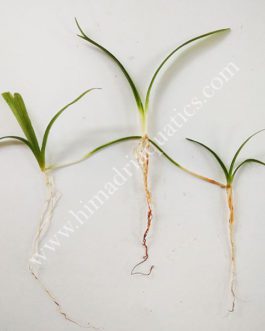
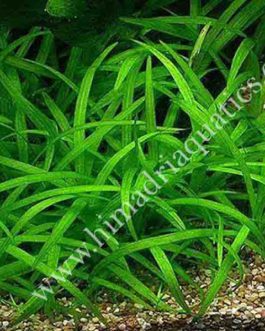
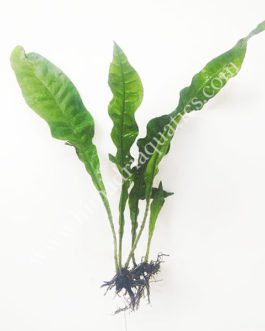
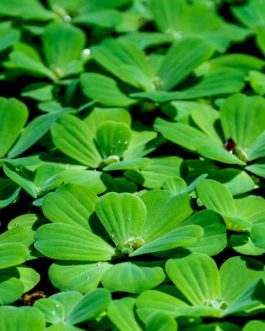
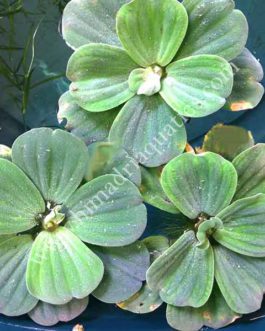
Reviews
There are no reviews yet.